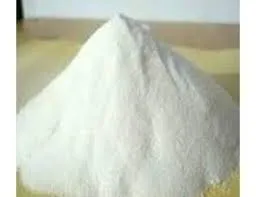
ነሐሴ . 29, 2024 10:02 Back to list
Hydroxypropyl Methyl Cellulose Side Effects - What You Need to Know
Understanding the Side Effects of Hydroxypropyl Methyl Cellulose
Hydroxypropyl methyl cellulose (HPMC), a semi-synthetic polymer derived from cellulose, is widely used in various applications, including pharmaceuticals, food products, and cosmetics. As an excipient, it acts as a thickening agent, emulsifier, and stabilizer, providing texture and consistency to products. While HPMC is generally considered safe, it is essential to understand its potential side effects and interactions.
Common Uses of HPMC
HPMC is prevalent in many industries. In the pharmaceutical field, it is often used in the formulation of controlled-release medications and as a binder in tablets. In the food industry, it serves as a thickening agent and stabilizer, commonly found in gluten-free products, sauces, and dressings. In cosmetics, HPMC enhances the viscosity of creams and gels, improving their application properties.
Safety Profile of HPMC
The safety of hydroxypropyl methyl cellulose has been extensively studied
. Regulatory agencies, including the FDA and the European Food Safety Authority (EFSA), classify it as safe for consumption and topical application. However, like any substance, HPMC may have side effects, especially when used in excess or by sensitive individuals.Potential Side Effects
hydroxypropyl methyl cellulose side effects

1. Gastrointestinal Issues One of the most commonly reported side effects of HPMC is gastrointestinal discomfort. Some individuals may experience bloating, gas, or diarrhea, particularly when ingesting high doses. These symptoms are usually mild and resolve once the intake of HPMC is reduced.
2. Allergic Reactions Although rare, allergic reactions to HPMC can occur. Symptoms may include itching, redness, or swelling at the site of application or ingestion. Individuals with a known allergy to cellulose derivatives should avoid products containing HPMC.
3. Interaction with Medications HPMC has the potential to interfere with the absorption of certain medications. As a thickening agent, it may slow gastric emptying, leading to altered absorption rates. Patients taking oral medications should consult their healthcare provider to determine if adjustments are necessary when consuming HPMC-containing products.
4. Dryness and Irritation In topical formulations, HPMC may cause dryness or irritation for some individuals, particularly those with sensitive skin. It is advisable to conduct a patch test before using products containing HPMC to check for any adverse reactions.
Conclusion
Hydroxypropyl methyl cellulose is a versatile ingredient widely used across various industries. While it is deemed safe for most individuals, it is crucial to be aware of potential side effects, especially for those with allergies or gastrointestinal sensitivities. Moderation is key; consuming or applying products with HPMC in reasonable amounts is unlikely to cause adverse reactions. If you experience any side effects or have concerns about using products containing HPMC, consulting a healthcare professional can help ensure safe usage tailored to your health needs. By understanding the benefits and potential drawbacks of hydroxypropyl methyl cellulose, consumers can make informed choices about the products they use in their daily lives.
-
Why HPMC is a Key Additive in Wall Putty Formulations
NewsAug.05,2025
-
Redispersible Powder in Decorative Renders: Function Meets Finish
NewsAug.05,2025
-
Redispersible Powder for Interior Wall Putty: Smooth Results Every Time
NewsAug.05,2025
-
HPMC’s Water Retention Capacity in Dry Mortar Applications
NewsAug.05,2025
-
HPMC Factory Contributions to Liquid Detergents
NewsAug.05,2025
-
How HPMC Factory Products Change Detergent Textures
NewsAug.05,2025







